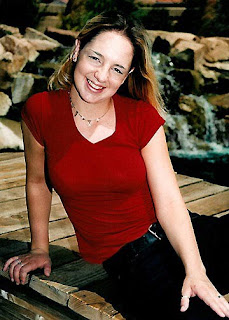 In this example, even though it was very bright outside I still used the two flash set up mentioned below. The reason being . . . it was too bright and sunny.
In this example, even though it was very bright outside I still used the two flash set up mentioned below. The reason being . . . it was too bright and sunny.Notice, no harsh shadows on the faces. People may look at you strange when shooting with flash on a bright sunny day, but I find the images consistently look better.
I also use this type of setup when trying to do a little fill light. Example: using natural leaves to frame your subject. Normally they turn dark, because your camera is exposing for the subject itself. Using the extra flash, makes both the subject and the leaves look natural.
See an example under my post dated Nov. 28th 2010 that is called: "MORE than what you saw".










